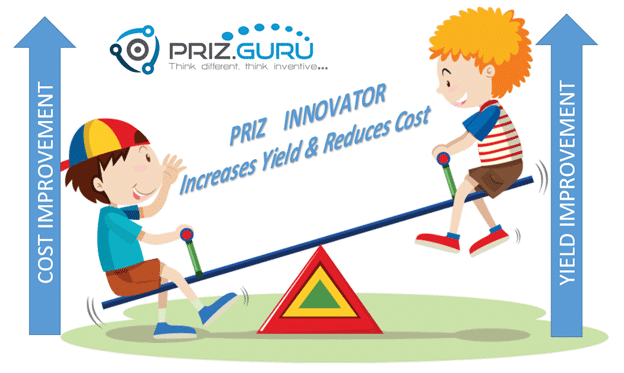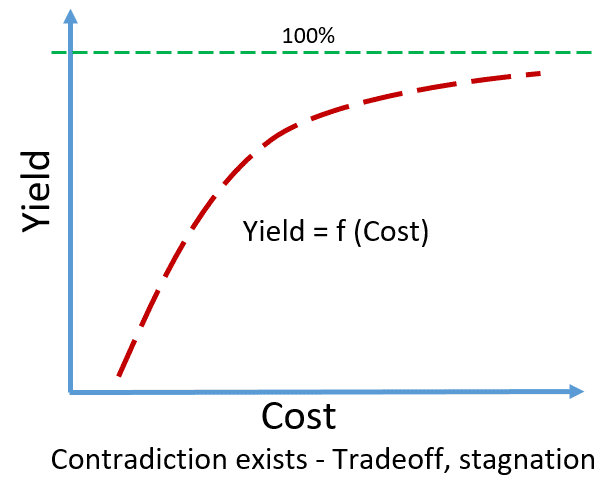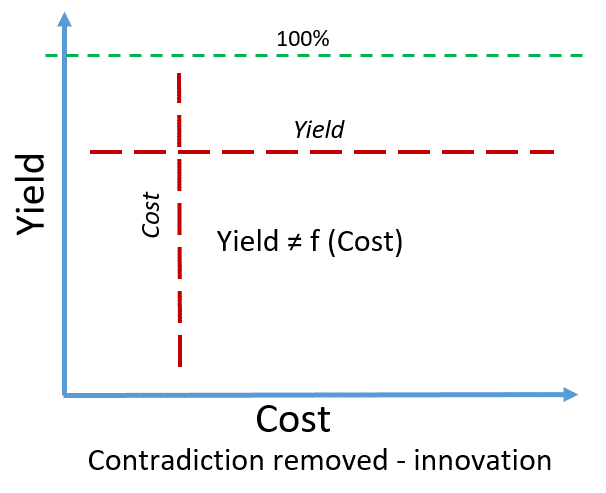
When exploring how to improve the manufacturing process, managers focus on two critical parameters: production yield and product cost. Tasking their teams with reducing costs and enhancing yield, managers must address these elements, which are closely interconnected, much like a child’s swing. Despite the well-known link between yield and cost, efforts to improve these parameters often occur in isolation.

This article explores two significant strategy vectors: improving production yield and reducing product costs, providing you with more resources to tackle the problem of how to improve a process.
These strategies can collectively lead to more efficient, customer-focused, and adaptive service processes.
Identifying opportunities for process improvement is crucial for any organization aiming to enhance efficiency, reduce costs, and improve overall performance. Here’s a step-by-step guide to help you identify areas where your processes can be optimized:
Start by documenting your current processes. Use flowcharts or process maps to visualize the steps involved in each process. This helps in understanding the workflow and pinpointing areas of redundancy, delays, or inefficiencies.
Gather data related to the processes. This might include metrics on process time, costs, error rates, and output quality. Analyzing this data will provide insights into performance and highlight areas that need improvement.
Engage with employees, customers, and suppliers to gather feedback on the process effectiveness and efficiency. Stakeholder insights can reveal pain points and areas of dissatisfaction that might not be apparent through data analysis alone.
Look for bottlenecks where processes slow down, and identify inefficiencies where resources (time, effort, money) are being wasted. These are prime candidates for immediate improvement.
Compare your processes with industry standards or with similar processes in other successful companies. Benchmarking against best practices can reveal gaps in your processes and guide improvements.
The management defines two targets:
Managers of lower-level begin to set up projects trying to achieve each target.
All the projects above are good, but, unfortunately, they will not solve the actual problems of production plants. And the reason for that is very simple, any efforts to improve either yield or cost are contradictory to each other. Improvement of any parameter with this approach is only possible only by compromising something else. However, a tradeoff between yield and cost is not really an improvement. It is quite clear that any changes targetting to improve the process yield will elevate the production cost and vice versa. Any attempts to reduce the cost will definitely affect the production yield. The yield and cost are functionally related as shown below:

The chart above tells us a simple story – trying to improve yield and reduce cost separately is a waste of time. The result is a tradeoff, and that will keep the production stagnant. In simple words, we should not expect real development from this process.
To make innovation and solve the problem the relation between Yield and Cost should be destroyed. The elimination of а contradiction will allow improving both yield and cost independently.

This is straightforward, we’ll use 40 inventive principles.
Among other tools, PRIZ Innovation Platform offers 40 Inventive Principles tool. The whole purpose of this tool is to break contradictions.

If we apply relevant changes to the production process, then the yield will be improved, but the cost will be increased.
Yield – #29 “Manufacturing precision”
The degree to which the actual characteristics of a system or object match in specified or required characteristics. Accuracy.
Cost – #21 “Power”
The rate at which work is performed. The rate of use of energy. the rate of energy output.
The contradiction is symmetrical; if formulated vise versa, the recommended principles are the same:
#32 “Color changes” – Change the color or transparency of an object or its external environment.
#2 “Taking out (Extraction)” – Separate an interfering part or property from an object.
Reading the explanations and thinking brings us to the innovative solution improving both yield and cost.
Eliminate operations and delegate the functions to other operations:

In this example, the Innovative principles tool is operating as a managerial technique. Based on our analysis, the manager should have only defined one target – Shorten the process flow. This is, in fact, the best way to improve the yield and reduce cost simultaneously.
Shortening the process is a real innovation moving the process closer to ideality.
Operations elimination is a problem that is solved using problem-solving tools. PRIZ Innovation Platform is the instrument for such changes.
If you wanted to know how to improve a process, now you have the answer—you need to try our tool. All you have to do now is log in to the platform, open a project, and start innovating.
Shyamal Kumar Sinha
June 13, 2021
I am a Metallurgist by profession, worked as a Head of SMS Process M/S Sunflag Steel, retired in 2017.
Mike brown
November 24, 2021
Einnosys offers various solutions for Yield Improvement, ranging from simple barcode scanning of the lot boxes to very complex analysis of yield-related issues by correlating end-to-end wafer data. Our team members have decades of experience in improving yield at all areas of Assembly, Test, Packaging factories, and FABs.
Amos Redlich
June 2, 2022
Outsourcing is an excellent example of shortening the process by delegating part of the work to an external vendor. At the extreme, many manufacturers have completely abandoned production and moved to market activities and providing services as part of their efficiency program.